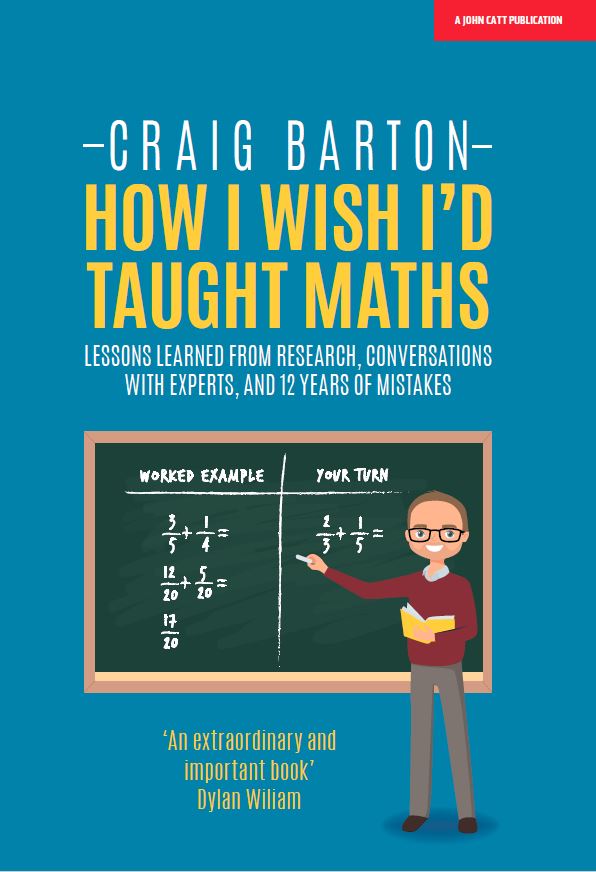KS2 2022 Mathematics Paper 1: Arithmetic
Mark Scheme Legend
- 1m = 1 Mark
- 2m = 2 Marks (Method mark available)
Table of Contents
- Question 1 (Addition)
- Question 2 (Multiplication)
- Question 3 (Missing Number)
- Question 4 (Division)
- Question 5 (Missing Number)
- Question 6 (Decimals)
- Question 7 (Division)
- Question 8 (Division)
- Question 9 (Subtraction)
- Question 10 (Multiplication)
- Question 11 (Division)
- Question 12 (Multiplication)
- Question 13 (Division)
- Question 14 (Subtraction)
- Question 15 (Multiplication)
- Question 16 (Decimals)
- Question 17 (Long Division)
- Question 18 (Fractions)
- Question 19 (Long Multiplication)
- Question 20 (Decimals)
- Question 21 (Fractions)
- Question 22 (Fractions)
- Question 23 (Decimals)
- Question 24 (Fractions)
- Question 25 (Fractions)
- Question 26 (Decimals)
- Question 27 (Percentages)
- Question 28 (Percentages)
- Question 29 (Long Division)
- Question 30 (Percentages)
- Question 31 (Fractions)
- Question 32 (Fractions)
- Question 33 (Long Multiplication)
- Question 34 (Fractions)
- Question 35 (Order of Ops)
- Question 36 (Fractions)
Question 1 (1 mark)
📝 Worked Solution
Step 1: Understanding the Question
💡 What are we being asked to find?
We need to add three whole numbers together to find the total sum.
Step 2: Column Addition
💡 Why we do this:
Using column addition ensures we add the digits in the correct place value (units with units, tens with tens, etc.) correctly.
✏ Working:
\[ \begin{array}{@{}c@{\,}c@{\,}c@{\,}c@{\,}c} & 6 & 1 & 5 & 5 \\ & & 5 & 0 & 1 \\ + & & 6 & 4 & 9 \\ \hline & 7 & 3 & 0 & 5 \\ \hline & 1 & 1 & 1 & \end{array} \]✓ Correct column alignment and carrying
🔍 What this tells us:
Starting from the right (units): \(5+1+9 = 15\) (write 5, carry 1).
Tens: \(5+0+4 + \text{carried } 1 = 10\) (write 0, carry 1).
Hundreds: \(1+5+6 + \text{carried } 1 = 13\) (write 3, carry 1).
Thousands: \(6 + \text{carried } 1 = 7\).
🎯 Final Answer:
7,305
✓ Total: 1 mark
Question 2 (1 mark)
📝 Worked Solution
Step 1: Understanding the Operation
💡 What are we being asked to do?
We need to multiply a number by zero.
Step 2: Applying the Zero Property
💡 Why we do this:
There is a special rule for multiplying by zero. “Zero times anything is zero.”
✏ Working:
\[ 0 \times \text{any number} = 0 \] \[ 0 \times 989 = 0 \]🔍 What this tells us:
If you have zero groups of 989, you have nothing.
🎯 Final Answer:
0
✓ Total: 1 mark
Question 3 (1 mark)
📝 Worked Solution
Step 1: Understanding the Missing Number
💡 What are we being asked to find?
We need to find a number that, when added to 10, equals 302.
Step 2: Inverse Operation
💡 Why we do this:
The inverse (opposite) of addition is subtraction. To find the missing part, we subtract the part we know (10) from the total (302).
✏ Working:
\[ 302 – 10 = ? \]Subtract 10 from 302:
\[ 302 – 10 = 292 \]🔍 What this tells us:
The missing number is 292. We can check by adding: \(10 + 292 = 302\).
🎯 Final Answer:
292
✓ Total: 1 mark
Question 4 (1 mark)
📝 Worked Solution
Step 1: Understanding the Operation
💡 What are we being asked to do?
We need to divide 2,400 by 2. This is the same as finding half of 2,400.
Step 2: Mental Strategy
💡 Why we do this:
When dividing numbers ending in zeros, we can divide the non-zero part first and then put the zeros back.
✏ Working:
Ignore the zeros for a moment: \( 24 \div 2 = 12 \)
Now add the two zeros back:
\[ 12 \rightarrow 1,200 \]🔍 What this tells us:
Half of 2,400 is 1,200.
🎯 Final Answer:
1,200
✓ Total: 1 mark
Question 5 (1 mark)
📝 Worked Solution
Step 1: Understanding the Missing Number
💡 What are we being asked to find?
We have a missing starting number. When we add 70 to it, we get 485.
Step 2: Inverse Operation
💡 Why we do this:
To find the missing start number, we work backwards. The opposite of adding 70 is subtracting 70.
✏ Working:
\[ 485 – 70 = ? \]Subtract the tens:
\[ 80 – 70 = 10 \]So, \( 485 – 70 = 415 \)
🔍 What this tells us:
The missing number is 415. Check: \(415 + 70 = 485\).
🎯 Final Answer:
415
✓ Total: 1 mark
Question 6 (1 mark)
📝 Worked Solution
Step 1: Understanding Decimal Addition
💡 What are we being asked to do?
We need to add two decimal numbers. The most important rule is to align the decimal points.
Step 2: Column Addition
💡 Why we do this:
To avoid mistakes, we can add a ‘place holder’ zero to make the numbers the same length: 8.6 becomes 8.60.
✏ Working:
\[ \begin{array}{@{}c@{\,}c@{\,}c@{\,}c@{\,}c} & & 6 & . & 4 & 8 \\ + & & 8 & . & 6 & 0 \\ \hline & 1 & 5 & . & 0 & 8 \\ \hline & 1 & 1 & & & \end{array} \]🔍 What this tells us:
Hundredths: \(8 + 0 = 8\)
Tenths: \(4 + 6 = 10\) (write 0, carry 1)
Units: \(6 + 8 + 1 \text{ (carried)} = 15\)
The decimal point stays in the same straight line.
🎯 Final Answer:
15.08
✓ Total: 1 mark
Question 7 (1 mark)
📝 Worked Solution
Step 1: Understanding the Operation
💡 What are we being asked to do?
We need to divide 240 by 8. The empty box is just asking for the answer.
Step 2: Using Multiplication Facts
💡 Why we do this:
We know that \(3 \times 8 = 24\). We can use this fact to solve \(240 \div 8\).
✏ Working:
We know: \( 24 \div 8 = 3 \)
Therefore: \( 240 \div 8 = 30 \)
🔍 What this tells us:
The answer is 30.
🎯 Final Answer:
30
✓ Total: 1 mark
Question 8 (1 mark)
📝 Worked Solution
Step 1: Selecting a Method
💡 What are we being asked to do?
Divide 840 by 5. We can use the “Bus Stop” method (Short Division).
Step 2: Short Division
💡 Why we do this:
It breaks the large number into manageable chunks.
✏ Working:
\[ \begin{array}{l} \phantom{x}1\,6\,8 \\ 5\overline{)8^34^40} \end{array} \]🔍 What this tells us:
1. How many 5s in 8? 1 remainder 3.
2. Carry the 3 to the 4 to make 34.
3. How many 5s in 34? 6 remainder 4.
4. Carry the 4 to the 0 to make 40.
5. How many 5s in 40? 8.
🎯 Final Answer:
168
✓ Total: 1 mark
Question 9 (1 mark)
📝 Worked Solution
Step 1: Understanding the Operation
💡 What are we being asked to do?
Subtract 1,847 from 7,306.
Step 2: Column Subtraction (Decomposition)
💡 Why we do this:
When the top digit is smaller than the bottom digit, we need to “exchange” or “borrow” from the next column to the left.
✏ Working:
\[ \begin{array}{@{}c@{\,}c@{\,}c@{\,}c@{\,}c} & ^6\cancel{7} & ^{12}\cancel{3} & ^9\cancel{0} & ^1 6 \\ – & 1 & 8 & 4 & 7 \\ \hline & 5 & 4 & 5 & 9 \\ \hline \end{array} \]🔍 What this tells us:
Units: \(6 – 7\) doesn’t work. Exchange from tens. Wait, tens is 0! Exchange from hundreds.
The 300 becomes 200, making the tens 10.
Now exchange from the 10 (making it 9) to make the units 16.
\(16 – 7 = 9\)
\(9 – 4 = 5\)
\(12 – 8 = 4\)
\(6 – 1 = 5\)
🎯 Final Answer:
5,459
✓ Total: 1 mark
Question 10 (1 mark)
📝 Worked Solution
Step 1: Understanding Multiplication by 10
💡 What happens when we multiply by 10?
Multiplying a whole number by 10 shifts all digits one place to the left. We add a zero to the end.
Step 2: Place Value Shift
💡 Why we do this:
It is efficient. \(1010\) becomes \(10100\).
✏ Working:
\[ 1,010 \xrightarrow{\times 10} 10,100 \]🎯 Final Answer:
10,100
✓ Total: 1 mark
Question 11 (1 mark)
📝 Worked Solution
Step 1: Using Known Facts
💡 What do we know?
We need to divide 560 by 7. We can use our times tables to help us.
Step 2: Mental Strategy
💡 Why we do this:
We know that \( 7 \times 8 = 56 \). Therefore, \( 56 \div 7 = 8 \).
✏ Working:
Since \( 56 \div 7 = 8 \), then:
\[ 560 \div 7 = 80 \](The number is 10 times bigger, so the answer is 10 times bigger).
🔍 What this tells us:
The answer is 80.
🎯 Final Answer:
80
✓ Total: 1 mark
Question 12 (1 mark)
📝 Worked Solution
Step 1: Grouping the Calculation
💡 Strategy:
We can multiply these numbers in any order. It is often easiest to multiply the single digits first, or leave the 10 for last.
Step 2: Step-by-step Multiplication
💡 Why we do this:
Let’s do \( 6 \times 11 \) first, as that is a standard times table fact.
✏ Working:
\[ 6 \times 11 = 66 \]Now multiply the result by 10:
\[ 66 \times 10 = 660 \]🔍 What this tells us:
The total product is 660.
🎯 Final Answer:
660
✓ Total: 1 mark
Question 13 (1 mark)
📝 Worked Solution
Step 1: Selecting a Method
💡 What is the best approach?
We can use short division (bus stop method) or recognize the relationship between 108 and 9.
Step 2: Short Division
✏ Working:
\[ \begin{array}{l} \phantom{x}0\,1\,2\,0 \\ 9\overline{)1^10^18\,0} \end{array} \]1. 9 into 1 doesn’t go.
2. 9 into 10 goes 1 time, remainder 1.
3. Carry the 1 to make 18. 9 into 18 goes 2 times.
4. 9 into 0 goes 0 times.
🔍 What this tells us:
The answer is 120. (Check: \(12 \times 9 = 108\), so \(120 \times 9 = 1080\)).
🎯 Final Answer:
120
✓ Total: 1 mark
Question 14 (1 mark)
📝 Worked Solution
Step 1: Understanding Place Value
💡 What are we subtracting?
We are taking 5 thousands away from 500 thousands. This is a mental calculation using place value.
Step 2: Counting Back or Column Method
💡 Why we do this:
Think of it as 500 (thousands) – 5 (thousands) = 495 (thousands).
✏ Working:
\[ \begin{array}{@{}c@{\,}c@{\,}c@{\,}c@{\,}c@{\,}c} & ^4\cancel{5} & ^9\cancel{0} & ^{10}\cancel{0} & , 0 & 0 & 0 \\ – & & & 5 & , 0 & 0 & 0 \\ \hline & 4 & 9 & 5 & , 0 & 0 & 0 \\ \hline \end{array} \]🔍 What this tells us:
The zeros in the hundreds, tens, and units columns remain zeros. We only change the thousands and hundred-thousands columns.
🎯 Final Answer:
495,000
✓ Total: 1 mark
Question 15 (1 mark)
📝 Worked Solution
Step 1: Setting up the Multiplication
💡 What method should we use?
We need to multiply a 3-digit number by a 1-digit number. Short multiplication (column method) is best here.
Step 2: Short Multiplication
✏ Working:
\[ \begin{array}{@{}c@{\,}c@{\,}c@{\,}c} & 5 & 9 & 6 \\ \times & & & 7 \\ \hline 4 & 1 & 7 & 2 \\ \hline 4 & 6 & 4 & \end{array} \]🔍 What this tells us:
1. \(6 \times 7 = 42\) (write 2, carry 4)
2. \(9 \times 7 = 63\). Add the 4 to get 67 (write 7, carry 6)
3. \(5 \times 7 = 35\). Add the 6 to get 41.
🎯 Final Answer:
4,172
✓ Total: 1 mark
Question 16 (1 mark)
📝 Worked Solution
Step 1: Dividing by 10
💡 What is the rule?
When we divide by 10, the digits shift one place to the right. The number gets 10 times smaller.
Step 2: Moving the Digits
✏ Working:
2 units become 2 tenths.
1 tenth becomes 1 hundredth.
2 hundredths become 2 thousandths.
\[ 2.12 \xrightarrow{\div 10} 0.212 \]🔍 What this tells us:
The decimal point appears to move one step to the left.
🎯 Final Answer:
0.212
✓ Total: 1 mark
Question 17 (2 marks)
21 ) 6 7 2
Show your method
📝 Worked Solution
Step 1: Setting up Long Division
💡 Strategy:
We are dividing by a 2-digit number (21). It is helpful to write down the first few multiples of 21: 21, 42, 63, 84…
Step 2: The Division Process
✏ Working:
\[ \begin{array}{r} 32 \\ 21 \enclose{longdiv}{672} \\ \underline{-63}\phantom{2} \\ 42 \\ \underline{-42} \\ 0 \end{array} \]🔍 What this tells us:
1. Divide: How many 21s in 67? \(3 \times 21 = 63\). So, 3 goes on top.
2. Subtract: \(67 – 63 = 4\).
3. Bring down: Bring down the 2 to make 42.
4. Divide: How many 21s in 42? \(2 \times 21 = 42\). So, 2 goes on top.
5. Subtract: \(42 – 42 = 0\). No remainder.
🎯 Final Answer:
32
✓ Total: 2 marks
Question 18 (1 mark)
📝 Worked Solution
Step 1: Finding a Common Denominator
💡 Why can’t we just add them yet?
The fractions have different denominators (bottom numbers): 9 and 3. We must make them the same before adding. 9 is a multiple of 3, so we can use 9 as the common denominator.
Step 2: Conversion and Addition
✏ Working:
Convert \(\frac{2}{3}\) into ninths:
\[ \frac{2}{3} = \frac{2 \times 3}{3 \times 3} = \frac{6}{9} \]Now add the fractions:
\[ \frac{4}{9} + \frac{6}{9} = \frac{10}{9} \]🔍 What this tells us:
The answer is \(\frac{10}{9}\) (an improper fraction). We can also convert this to a mixed number: \(1 \frac{1}{9}\). Both answers are correct.
🎯 Final Answer:
\(\frac{10}{9}\) or \(1 \frac{1}{9}\)
✓ Total: 1 mark
Question 19 (2 marks)
× 8 3
Show your method
📝 Worked Solution
Step 1: Long Multiplication Setup
💡 Why do we need two rows?
We multiply by the units (3) in the first row, and by the tens (80) in the second row.
Step 2: Calculating Both Rows
✏ Working:
\[ \begin{array}{@{}c@{\,}c@{\,}c@{\,}c@{\,}c@{\,}c} & & & 6 & 0 & 7 \\ \times & & & & 8 & 3 \\ \hline & & 1 & 8 & 2 & 1 & (3 \times 607) \\ + & 4 & 8 & 5 & 6 & 0 & (80 \times 607) \\ \hline & 5 & 0 & 3 & 8 & 1 \\ \hline \end{array} \]🔍 What this tells us:
Row 1: \(3 \times 7 = 21\) (1 carry 2). \(3 \times 0 = 0 + 2 = 2\). \(3 \times 6 = 18\). Result: 1821.
Row 2: Place a zero placeholder. \(8 \times 7 = 56\) (6 carry 5). \(8 \times 0 = 0 + 5 = 5\). \(8 \times 6 = 48\). Result: 48560.
Sum: Add the two rows to get 50,381.
🎯 Final Answer:
50,381
✓ Total: 2 marks
Question 20 (1 mark)
📝 Worked Solution
Step 1: Multiplying Decimals by 1,000
💡 What happens when we multiply by 1,000?
The number gets 1,000 times bigger. All digits move 3 places to the left.
Step 2: Shifting the Digits
✏ Working:
\[ 13.05 \xrightarrow{\text{1 place}} 130.5 \] \[ 130.5 \xrightarrow{\text{2 places}} 1305 \] \[ 1305 \xrightarrow{\text{3 places}} 13,050 \]🔍 What this tells us:
The decimal point moves 3 jumps to the right. We need to add a placeholder zero to fill the gap.
🎯 Final Answer:
13,050
✓ Total: 1 mark
Question 21 (1 mark)
📝 Worked Solution
Step 1: Adding Fractions with Like Denominators
💡 What do we notice?
Both fractions have the same denominator (3). This makes addition easy. We can add the whole numbers and the fractions separately.
Step 2: Grouping
✏ Working:
Split the mixed number:
\[ 2\frac{1}{3} = 2 + \frac{1}{3} \]Now add the fractions together:
\[ \frac{2}{3} + \frac{1}{3} = \frac{3}{3} \]We know that \(\frac{3}{3} = 1\).
Finally, add the whole number:
\[ 2 + 1 = 3 \]🔍 What this tells us:
The total is exactly 3.
🎯 Final Answer:
3
✓ Total: 1 mark
Question 22 (1 mark)
📝 Worked Solution
Step 1: The ‘Divide and Multiply’ Rule
💡 How do we find a fraction of an amount?
We divide the amount by the denominator (bottom number) and multiply by the numerator (top number).
“Divide by the bottom, times by the top.”
Step 2: Calculation
✏ Working:
1. Divide by the denominator (10):
\[ 30 \div 10 = 3 \]2. Multiply by the numerator (7):
\[ 3 \times 7 = 21 \]🔍 What this tells us:
If we split 30 into 10 parts, each part is 3. We want 7 of those parts, which is 21.
🎯 Final Answer:
21
✓ Total: 1 mark
Question 23 (1 mark)
📝 Worked Solution
Step 1: Aligning Decimals
💡 The trick:
The number 8 is a whole number. To subtract a decimal from it, we must write 8 as 8.000 so we have placeholders to subtract from.
Step 2: Column Subtraction
✏ Working:
\[ \begin{array}{@{}c@{\,}c@{\,}c@{\,}c@{\,}c@{\,}c} & ^7\cancel{8} & . & ^9\cancel{0} & ^9\cancel{0} & ^{10}0 \\ – & 5 & . & 1 & 2 & 3 \\ \hline & 2 & . & 8 & 7 & 7 \\ \hline \end{array} \]🔍 What this tells us:
We have to exchange across all the zeros.
\(10 – 3 = 7\)
\(9 – 2 = 7\)
\(9 – 1 = 8\)
\(7 – 5 = 2\)
🎯 Final Answer:
2.877
✓ Total: 1 mark
Question 24 (1 mark)
📝 Worked Solution
Step 1: Visualising Division of Fractions
💡 What does this mean?
We have one eighth, and we need to cut it in half (divide by 2). If you cut a small slice of cake in half, the piece gets smaller.
Step 2: Calculation Method
💡 The Rule:
Dividing a fraction by an integer is the same as multiplying the denominator by that integer.
✏ Working:
\[ \frac{1}{8} \div 2 = \frac{1}{8 \times 2} \] \[ = \frac{1}{16} \]🔍 What this tells us:
Half of an eighth is a sixteenth.
🎯 Final Answer:
\(\frac{1}{16}\)
✓ Total: 1 mark
Question 25 (1 mark)
📝 Worked Solution
Step 1: Finding a Common Denominator
💡 Why is this harder?
The denominators (2 and 3) are different. We need a number that both 2 and 3 go into.
The lowest common multiple of 2 and 3 is 6.
Step 2: Converting and Adding
✏ Working:
Convert \(\frac{1}{2}\) to sixths (multiply top and bottom by 3):
\[ \frac{1 \times 3}{2 \times 3} = \frac{3}{6} \]Convert \(\frac{1}{3}\) to sixths (multiply top and bottom by 2):
\[ \frac{1 \times 2}{3 \times 2} = \frac{2}{6} \]Add them together:
\[ \frac{3}{6} + \frac{2}{6} = \frac{5}{6} \]🎯 Final Answer:
\(\frac{5}{6}\)
✓ Total: 1 mark
Question 26 (1 mark)
📝 Worked Solution
Step 1: Place Value Alignment
💡 Important Setup:
Just like Question 23, we are subtracting a decimal from a whole number. We must add placeholders to the whole number 26.
Step 2: Subtraction with Exchanging
✏ Working:
\[ \begin{array}{@{}c@{\,}c@{\,}c@{\,}c@{\,}c@{\,}c} & 2 & ^5\cancel{6} & . & ^9\cancel{0} & ^9\cancel{0} & ^{10}0 \\ – & & 2 & . & 0 & 1 & 2 \\ \hline & 2 & 3 & . & 9 & 8 & 8 \\ \hline \end{array} \]🔍 What this tells us:
We exchange from the 6 (making it 5), passing the 1 across the zeros.
\(10 – 2 = 8\)
\(9 – 1 = 8\)
\(9 – 0 = 9\)
\(5 – 2 = 3\)
\(2 – 0 = 2\)
🎯 Final Answer:
23.988
✓ Total: 1 mark
Question 27 (1 mark)
📝 Worked Solution
Step 1: Breaking down the Percentage
💡 Strategy:
We can’t easily find 15% in one go. But we can find 10% and 5% easily.
\( 15\% = 10\% + 5\% \)
Step 2: Calculating Parts
✏ Working:
Find 10%: Divide by 10.
\( 3200 \div 10 = 320 \)
Find 5%: Half of 10%.
\( 320 \div 2 = 160 \)
Total (15%): Add them together.
\( 320 + 160 = 480 \)
🔍 What this tells us:
The total value is 480.
🎯 Final Answer:
480
✓ Total: 1 mark
Question 28 (1 mark)
📝 Worked Solution
Step 1: Finding 1%
💡 Strategy:
To find 2%, first find 1%. To find 1%, we divide the total by 100.
Step 2: Calculation
✏ Working:
Find 1%: Divide 3,000 by 100.
\( 3000 \div 100 = 30 \)
Find 2%: Double it.
\( 30 \times 2 = 60 \)
🔍 What this tells us:
2% of 3,000 is 60.
🎯 Final Answer:
60
✓ Total: 1 mark
Question 29 (2 marks)
73 ) 3 0 6 6
Show your method
📝 Worked Solution
Step 1: Setting up
💡 Strategy:
We are dividing by 73. This is tricky! It helps to write a “coin list” or estimate.
\(73 \times 1 = 73\)
\(73 \times 2 = 146\)
\(73 \times 10 = 730\)
Step 2: Long Division
✏ Working:
\[ \begin{array}{r} 42 \\ 73 \enclose{longdiv}{3066} \\ \underline{-292}\phantom{6} \\ 146 \\ \underline{-146} \\ 0 \end{array} \]🔍 What this tells us:
1. 73 into 30 doesn’t go.
2. 73 into 306? Try 4. \(70 \times 4 = 280\), so close.
\(73 \times 4 = 292\). Remainder is \(306 – 292 = 14\).
3. Bring down the 6 to make 146.
4. 73 into 146? Double 73 is 146. So, it goes exactly 2 times.
🎯 Final Answer:
42
✓ Total: 2 marks
Question 30 (1 mark)
📝 Worked Solution
Step 1: Finding 10%
💡 Strategy:
If we find 10%, we can multiply it by 8 to get 80%.
Step 2: Calculation
✏ Working:
10%: \( 115 \div 10 = 11.5 \)
80%: \( 11.5 \times 8 \)
\( 11 \times 8 = 88 \)
\( 0.5 \times 8 = 4 \)
\( 88 + 4 = 92 \)
Alternative Method: Find 20% (double 10% = 23) and subtract it from the total (100% – 20% = 80%).
\(115 – 23 = 92\).
🎯 Final Answer:
92
✓ Total: 1 mark
Question 31 (1 mark)
📝 Worked Solution
Step 1: Common Denominator
💡 Why is this hard?
The denominators are 7 and 9. We need to find a number that is in both the 7 and 9 times tables.
\(7 \times 9 = 63\). We will use 63.
Step 2: Conversion and Subtraction
✏ Working:
First fraction (\(\frac{2}{7}\)): Multiply top and bottom by 9.
\(\frac{2 \times 9}{7 \times 9} = \frac{18}{63}\)
Second fraction (\(\frac{1}{9}\)): Multiply top and bottom by 7.
\(\frac{1 \times 7}{9 \times 7} = \frac{7}{63}\)
Subtract:
\(\frac{18}{63} – \frac{7}{63} = \frac{11}{63}\)
🎯 Final Answer:
\(\frac{11}{63}\)
✓ Total: 1 mark
Question 32 (1 mark)
📝 Worked Solution
Step 1: Convert to Improper Fraction
💡 Strategy:
Subtracting from a mixed number is easier if we turn it into an improper (top-heavy) fraction first.
Step 2: Conversion
✏ Working:
Convert \(2\frac{1}{2}\): \(2 \times 2 + 1 = 5\). So, \(\frac{5}{2}\).
Common Denominator: Multiples of 2 and 3. The lowest is 6.
Convert \(\frac{5}{2}\) to sixths: \(\frac{5 \times 3}{2 \times 3} = \frac{15}{6}\).
Convert \(\frac{2}{3}\) to sixths: \(\frac{2 \times 2}{3 \times 2} = \frac{4}{6}\).
Step 3: Subtract
✏ Working:
\[ \frac{15}{6} – \frac{4}{6} = \frac{11}{6} \]This can be written as \(1\frac{5}{6}\).
🎯 Final Answer:
\(1\frac{5}{6}\) or \(\frac{11}{6}\)
✓ Total: 1 mark
Question 33 (2 marks)
× 6 7
Show your method
📝 Worked Solution
Step 1: Long Multiplication
💡 Strategy:
Multiply 4078 by 7, then multiply 4078 by 60, then add.
Step 2: Calculation
✏ Working:
\[ \begin{array}{@{}c@{\,}c@{\,}c@{\,}c@{\,}c@{\,}c@{\,}c} & & & 4 & 0 & 7 & 8 \\ \times & & & & & 6 & 7 \\ \hline & & 2 & 8 & 5 & 4 & 6 & (7 \times 4078) \\ + & 2 & 4 & 4 & 6 & 8 & 0 & (60 \times 4078) \\ \hline & 2 & 7 & 3 & 2 & 2 & 6 \\ \hline \end{array} \]🔍 What this tells us:
Row 1: \(7 \times 8 = 56\). \(7 \times 7 = 49 (+5) = 54\). \(7 \times 0 = 0 (+5) = 5\). \(7 \times 4 = 28\).
Row 2: Zero placeholder. \(6 \times 8 = 48\). \(6 \times 7 = 42 (+4) = 46\). \(6 \times 0 = 0 (+4) = 4\). \(6 \times 4 = 24\).
Total: \(28,546 + 244,680 = 273,226\).
🎯 Final Answer:
273,226
✓ Total: 2 marks
Question 34 (1 mark)
📝 Worked Solution
Step 1: Subtraction Strategy
💡 Method:
We can subtract the whole number first, then the fraction.
Step 2: Count Back
✏ Working:
Start at 10.
Take away 2: \(10 – 2 = 8\).
Now take away \(\frac{1}{4}\): \(8 – \frac{1}{4}\).
If you take a quarter from 8, you are left with 7 and three-quarters.
🔍 What this tells us:
The answer is \(7\frac{3}{4}\).
🎯 Final Answer:
\(7\frac{3}{4}\)
✓ Total: 1 mark
Question 35 (1 mark)
📝 Worked Solution
Step 1: Order of Operations (BIDMAS)
💡 The Golden Rule:
You must Divide before you Add. (Division comes before Addition in BIDMAS).
Step 2: Calculation
✏ Working:
1. Do the division first: \(4 \div 2 = 2\).
2. Rewrite the sum: \(6 + 2\).
3. Add them: \(6 + 2 = 8\).
⚠️ Common Mistake:
If you add first (\(6+4=10\)) then divide (\(10 \div 2 = 5\)), the answer is wrong.
🎯 Final Answer:
8
✓ Total: 1 mark
Question 36 (1 mark)
📝 Worked Solution
Step 1: Multiplying Fractions by Integers
💡 Strategy:
This is the same as finding \(\frac{4}{5}\) of 400.
Divide by the denominator (5), then multiply by the numerator (4).
Step 2: Calculation
✏ Working:
1. Divide by 5:
\(40 \div 5 = 8\), so \(400 \div 5 = 80\).
2. Multiply by 4:
\(80 \times 4\).
\(8 \times 4 = 32\), so \(80 \times 4 = 320\).
🔍 What this tells us:
The answer is 320.
🎯 Final Answer:
320
✓ Total: 1 mark








